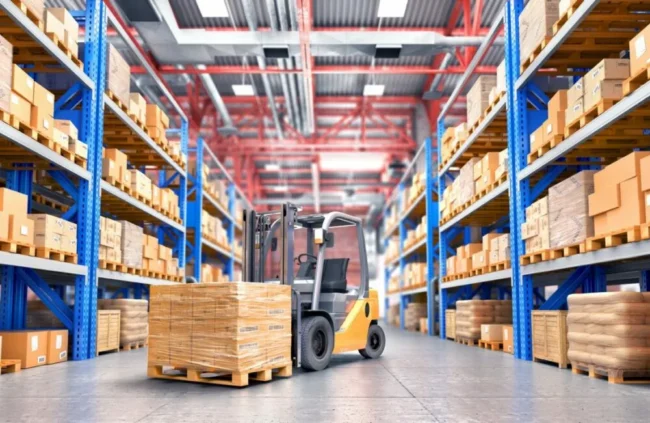Tubed packaged goods have become an integral part of daily life, shaping how consumers interact with various products ranging from toothpaste to spec
Tubed packaged goods have become an integral part of daily life, shaping how consumers interact with various products ranging from toothpaste to specialty adhesives. Their unique combination of convenience, protection, and design flexibility has fueled significant growth in multiple industries. As technology advances and consumer preferences evolve, tubed packaging continues to innovate, offering new opportunities and challenges.
This article dives deep into the innovation behind tubed packaged goods, explores market trends and consumer behavior, examines challenges, and looks ahead to the future of this versatile packaging format.
Must visit: primedomainhub

Introduction to Tubed Packaged Goods
Tubed packaged goods are consumer products encased in tubular containers made from materials such as plastic, aluminum, or laminates. These tubes typically hold viscous or semi-solid products, allowing for controlled dispensing and enhanced product protection.
Their flexible structure and ease of use have made tubes a preferred choice across personal care, pharmaceutical, food, and industrial sectors. The packaging ensures hygiene, reduces waste, and offers portability — all critical factors in today’s fast-paced consumer environment.
Innovation Driving Tubed Packaging
1. Material Advancements
Modern tubed packaging benefits from continuous innovations in material science. Early tubes were mainly aluminum, but today, a range of materials with specialized properties enhances performance:
- Multilayer Laminates: These combine layers of plastic and aluminum foil to provide strong barriers against oxygen, moisture, and light while maintaining flexibility and durability.
- Bio-Based Plastics: The push for sustainability has led to bio-derived polymers such as polylactic acid (PLA), which reduce reliance on fossil fuels and improve biodegradability.
- Recyclable Monomaterial Tubes: Innovations in single-material tubes aim to simplify recycling, addressing concerns about multilayer laminates that are difficult to process in standard recycling streams.
2. Smart and Interactive Packaging
The rise of smart packaging technologies has found its way into tubed goods:
- QR Codes and NFC Tags: Printed or embedded on tubes, these allow consumers to access detailed product information, authenticity verification, or promotional content via smartphones.
- Time-Sensitive Indicators: Some tubes now incorporate color-changing inks that indicate product freshness or expiration, improving safety and user confidence.
3. Enhanced Dispensing Mechanisms
Innovations extend beyond the tube body to closures and dispensing systems:
- Airless Tubes: Designed to prevent product contamination and oxidation by eliminating air exposure during dispensing, ideal for sensitive cosmetics and pharmaceuticals.
- Precision Applicators: Tubes with fine nozzles or brush tips provide targeted application, reducing waste and enhancing user experience, especially for medical ointments or adhesives.
Market Dynamics of Tubed Packaged Goods
1. Growing Consumer Demand
Consumers increasingly value convenience, portability, and hygiene — all strengths of tubed packaging. Urbanization, busy lifestyles, and rising awareness of product safety are driving demand, particularly in:
- Personal Care: Toothpaste, skincare creams, sunscreens, and hair products continue to dominate tubed packaging usage.
- Pharmaceuticals: Topical treatments for skin conditions, wound care, and dermatological medicines often require sterile, protective tubes.
- Food Sector: Condiments like tomato paste, mustard, and even culinary pastes are packaged in tubes for ease of use and preservation.
2. Regional Market Trends
The global tubed packaged goods market shows varied growth across regions:
- Asia-Pacific: Rapid urbanization, growing middle-class populations, and increasing awareness of personal hygiene products contribute to significant market expansion.
- Europe: Strong environmental regulations are encouraging adoption of recyclable and sustainable tubed packaging.
- North America: Innovation in premium personal care and pharmaceutical products drives demand, with consumers seeking convenience combined with advanced functionality.
3. Impact of E-commerce
The rise of e-commerce channels has influenced tubed packaging design, emphasizing:
- Durability: Tubes must withstand shipping and handling without damage.
- Size Variations: Travel and trial-sized tubes have become popular to cater to online consumer preferences for sampling before purchase.
- Packaging Aesthetics: With no physical shelf presence, packaging plays a vital role in online product presentation and brand identity.
Environmental Considerations
Sustainability is a key focus in the tubed packaging industry due to concerns about plastic waste and recyclability.
Challenges:
- Multilayer Materials: Laminated tubes often contain multiple layers bonded together, complicating recycling processes.
- Microplastics and Pollution: Improper disposal of plastic tubes contributes to environmental pollution.
Innovations and Solutions:
- Mono-material Tubes: Designed from a single recyclable plastic type to enable easier recycling.
- Refillable Tubes: Some brands promote reusable tubes with refill packs to minimize waste.
- Bio-based and Compostable Materials: Research into materials that break down more easily in natural environments is ongoing.
Consumer Behavior and Preferences
Understanding how consumers interact with tubed goods informs design and marketing:
- Preference for Hygiene: Tubes reduce direct contact with the product compared to jars, appealing to health-conscious users.
- Demand for Portability: Travel-friendly, compact tubes fit modern lifestyles.
- Eco-Conscious Buying: Increasing numbers of consumers seek environmentally responsible packaging, influencing brand choices.
- Desire for Transparency: Clear labeling, ingredient information, and product authenticity are important to build trust.
Challenges Faced by Tubed Packaged Goods
While tubed packaging offers many benefits, several challenges persist:
1. Production Costs
High-quality tubes, especially those with multilayer construction or specialty finishes, can be more expensive to produce than simpler packaging formats.
2. Technical Complexities
Filling and sealing viscous products require precise machinery and control to avoid contamination or spillage.
3. Consumer Perception
Some users prefer pumps or jars for ease of access or product feel, particularly with thicker creams or balms.
4. Environmental Impact
Balancing convenience with sustainability remains a complex issue, demanding ongoing innovation.
The Future of Tubed Packaged Goods
The future of tubed packaging looks promising, driven by innovation, consumer demand, and sustainability imperatives.
Emerging Trends:
- Hybrid Packaging: Combining tubes with pump dispensers or airless systems to maximize convenience and protection.
- Advanced Printing: Use of tactile coatings, metallic finishes, and holographic effects to enhance visual appeal.
- Digital Integration: More interactive packaging with embedded technology for consumer engagement and brand loyalty.
- Circular Economy Models: Emphasis on closed-loop recycling, reusable packaging, and refill systems.
Industry Outlook:
The global tubed packaged goods market is expected to grow steadily as manufacturers adopt sustainable materials and smart technologies. Collaborations between material scientists, packaging engineers, and marketers will drive this evolution, resulting in packaging that meets consumer expectations without compromising environmental responsibility.
Frequently Asked Questions (FAQs)
Q1: What makes tubed packaging more hygienic than jars or bottles?
A: Tubes limit product exposure to air and external contaminants because users squeeze the product out without direct contact, reducing contamination risks.
Q2: Are tubed packages recyclable?
A: Some tubes, especially those made from single types of plastic, are recyclable. However, multilayer laminates are more challenging to recycle, though new solutions are emerging.
Q3: Can tubes be used for both liquids and solids?
A: Tubes are best suited for semi-solid or viscous products such as creams, gels, and pastes. Very liquid products usually require bottles or other packaging formats.
Q4: How do airless tubes work?
A: Airless tubes use a vacuum mechanism to dispense the product without allowing air back inside, preserving product integrity and extending shelf life.
Q5: What industries use tubed packaged goods the most?
A: Personal care, pharmaceuticals, food, and industrial adhesives are the primary sectors utilizing tubed packaging extensively.
Q6: What are the latest trends in tubed packaging?
A: Trends include sustainable materials, smart packaging, airless tubes, and personalized packaging designs.
Conclusion
Tubed packaged goods continue to redefine the way consumers access and use everyday products. Their blend of convenience, hygiene, and adaptability makes them indispensable across multiple industries. As the market expands and consumer demands shift toward sustainability and smart technology, tubed packaging will undergo further transformation.
Manufacturers that invest in innovative materials, design enhancements, and eco-friendly solutions will lead the future of tubed goods. This packaging format not only meets present-day consumer needs but also aligns with the growing imperative to minimize environmental impact, promising a balanced and exciting future.

COMMENTS